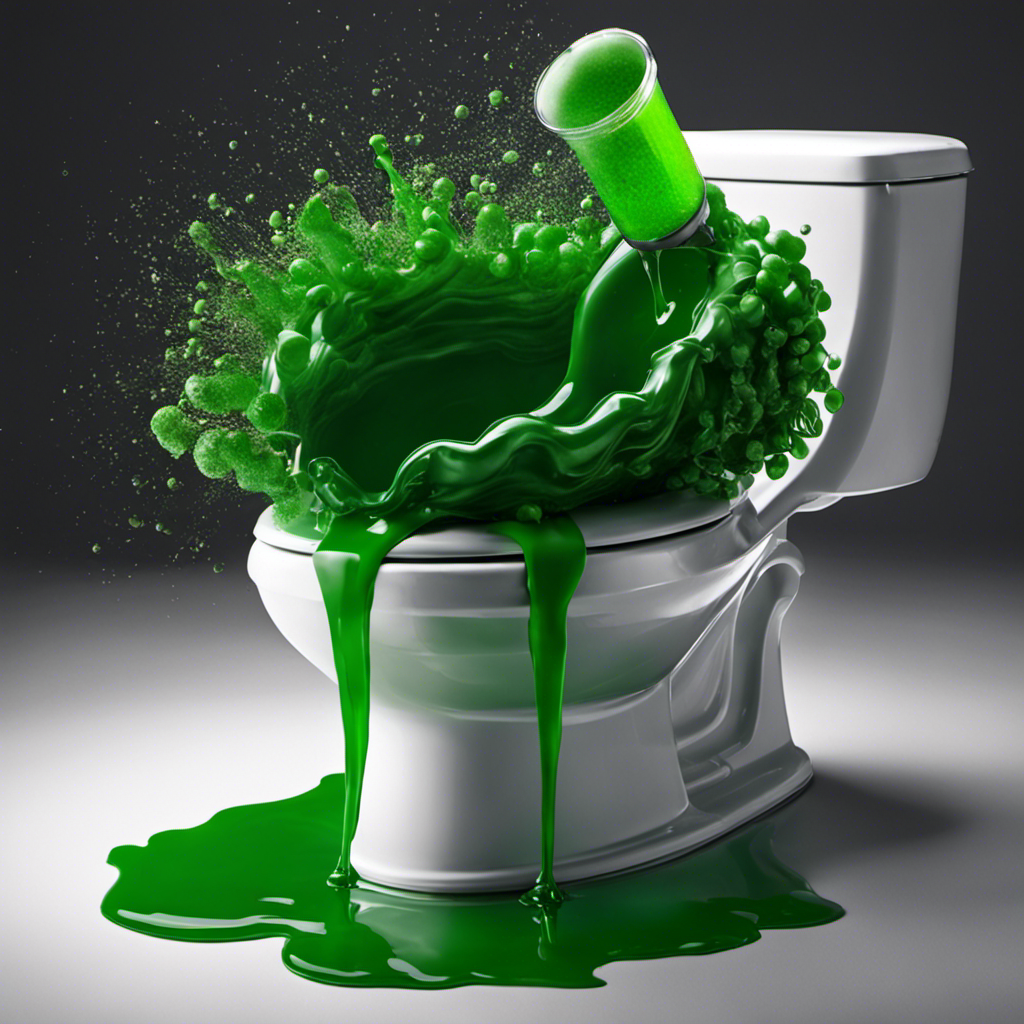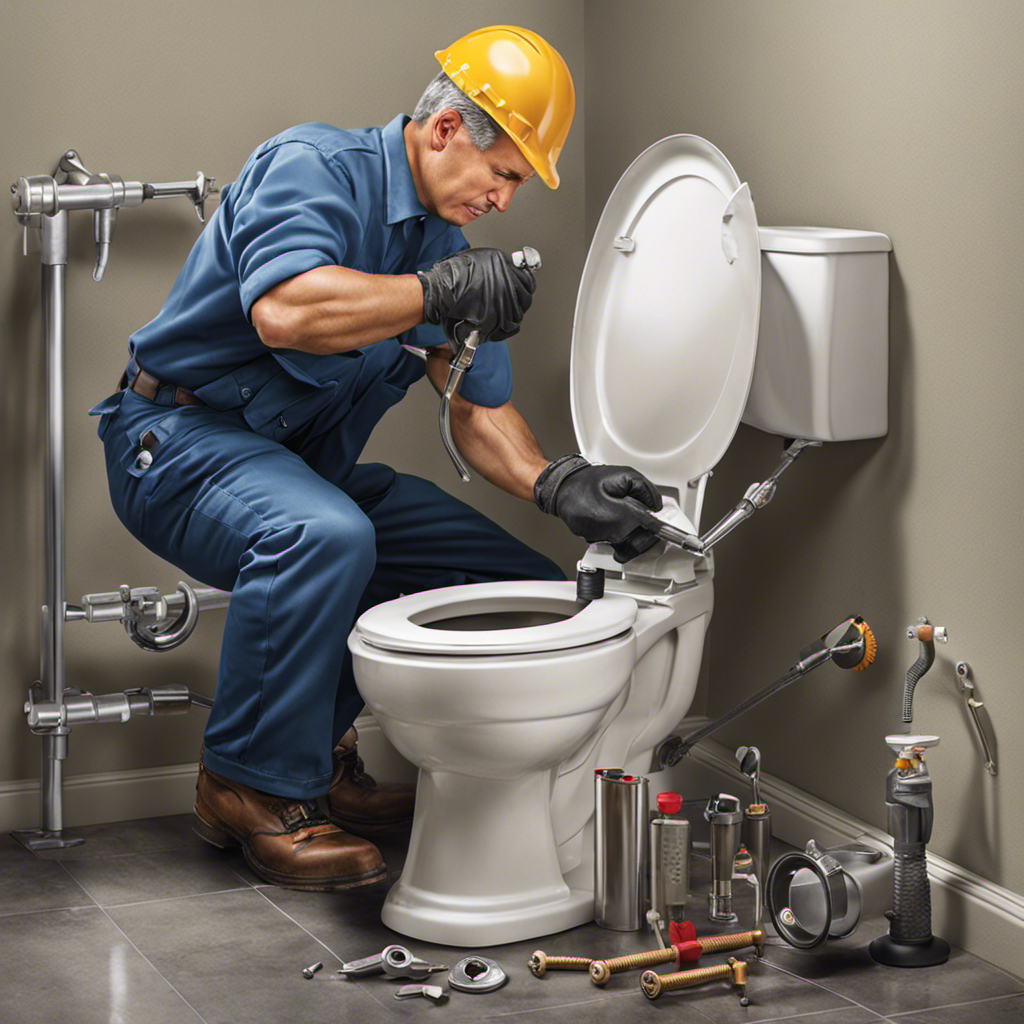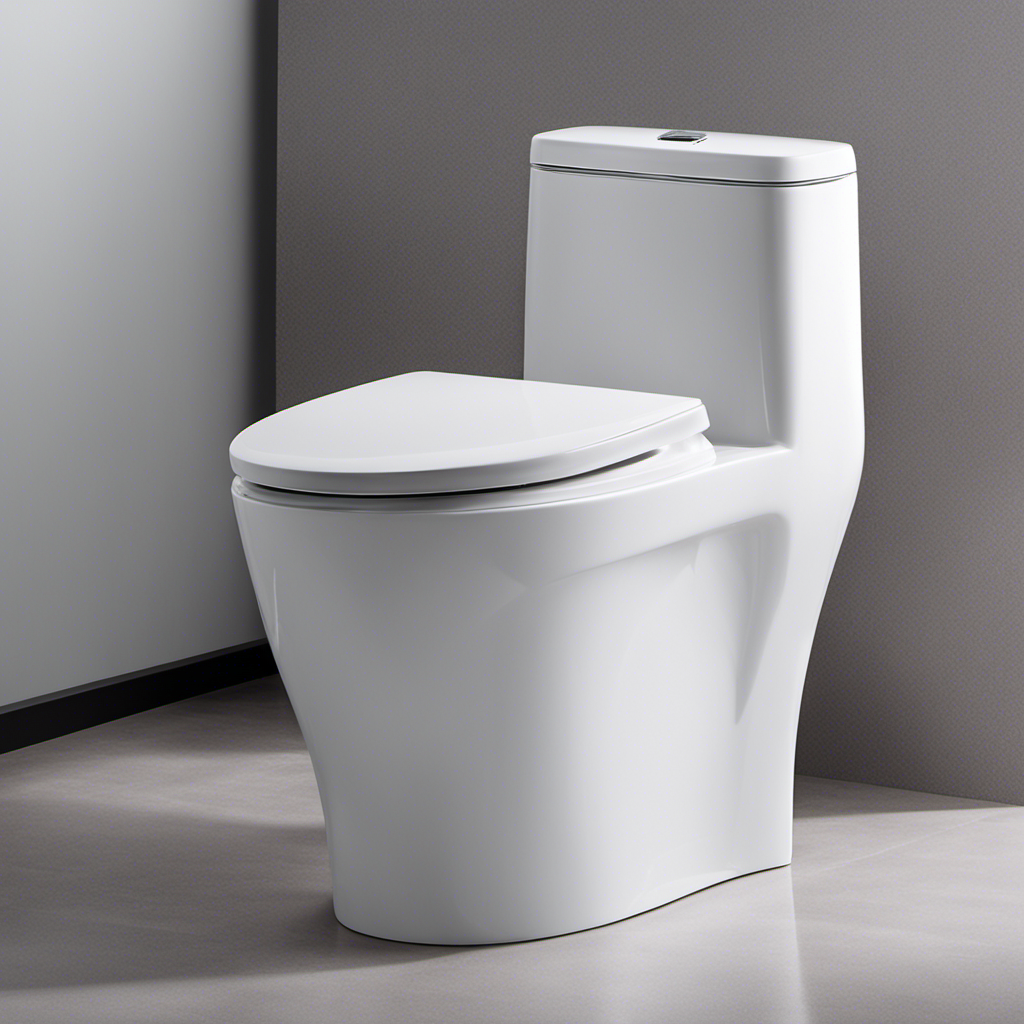Are you tired of waiting for your toilet flapper to close? Fed up with the slow and inefficient flushing process? Well, fear not! I’ve got the solution you’ve been dreaming of.
In this article, I’ll show you the simple steps to make your toilet flapper close faster than ever before. Say goodbye to those agonizingly long flushes and hello to a more efficient and speedy bathroom experience.
Get ready to revolutionize your toilet with these easy-to-follow tips and tricks. Let’s dive in!
Key Takeaways
- Slow flapper closure can lead to wasted water
- Troubleshooting involves checking for obstructions, adjusting chain length, or replacing the flapper
- Adjusting the chain length is crucial for efficient flapper closure
- Regular cleaning and inspection prevent issues and ensure proper function
Understanding the Toilet Flapper Mechanism
To understand why the toilet flapper doesn’t close fast enough, it’s important to know how the mechanism works.
The toilet flapper is a crucial component of the toilet tank, responsible for controlling the water flow during flushing. It is attached to the flush valve and covers the opening that allows water to enter the toilet bowl.
When the flush lever is pressed, the flapper lifts, allowing water to rush into the bowl. After flushing, the flapper should close quickly to prevent water from continuously flowing into the bowl.
If the flapper doesn’t close fast enough, it can lead to constant running water and wasted water. Troubleshooting flapper closure involves checking for any obstructions, adjusting the flapper chain length, or replacing a worn-out flapper.
Proper understanding of toilet flapper mechanics is essential for maintaining an efficient and water-saving toilet system.
Identifying Common Issues With Toilet Flapper Closure
Common issues with the toilet flapper’s closure can be identified by checking for common signs such as slow or incomplete flushing. If you notice that your toilet is not flushing properly or that the water is not completely draining from the tank, it could be a sign of a faulty flapper.
Troubleshooting flapper issues is relatively simple. Start by inspecting the flapper for any visible damage or wear. If you notice any cracks or tears in the rubber, it is likely time for a toilet flapper replacement.
Another common issue is a flapper that is not properly aligned or seated on the flush valve. Adjusting the chain length or repositioning the flapper can often resolve this problem.
Adjusting the Chain Length for Faster Flapper Closure
When adjusting the chain length, you’ll want to ensure that it is not too loose or too tight. The proper tension of the chain is crucial for the efficient closure of the toilet flapper. If the chain is too loose, it may cause the flapper to close slowly, resulting in water wastage. On the other hand, if the chain is too tight, it can prevent the flapper from closing fully, causing continuous water flow. To help you troubleshoot flapper closure speed, I have created a table below that outlines the steps for adjusting the flapper tension. By following these steps, you can ensure that the chain length is optimized for faster and more effective flapper closure.
| Step | Action |
|---|---|
| 1 | Locate the chain connecting the flapper to the flush handle. |
| 2 | Adjust the chain length by either adding or removing links. |
| 3 | Test the flapper closure speed by flushing the toilet. |
Cleaning and Maintaining the Flapper for Improved Performance
When it comes to maintaining optimal performance of your toilet flapper, there are a few key points to consider.
First, understanding the proper cleaning techniques is crucial in order to remove any debris or buildup that may be affecting the flapper’s function.
Additionally, increasing the efficiency of the flapper can be achieved through simple adjustments and replacements, such as ensuring a tight seal and replacing worn-out parts.
Lastly, regular maintenance is essential in preventing future issues and prolonging the lifespan of the flapper.
This includes inspecting for leaks, checking the chain length, and addressing any potential problems promptly.
Flapper Cleaning Techniques
To make the toilet flapper close faster, you can try using vinegar or a cleaning solution. Flapper maintenance is crucial for proper toilet function. Over time, flappers can become dirty or worn, causing them to close slowly or not seal properly. Regular cleaning can help prevent these issues and improve the overall performance of your toilet.
Here are some troubleshooting tips to help you address flapper problems:
| Problem | Possible Cause | Solution |
|---|---|---|
| Flapper closes slowly | Buildup of mineral deposits or debris on flapper | Clean the flapper with vinegar or a cleaning solution |
| Flapper doesn’t seal properly | Worn or damaged flapper | Replace the flapper with a new one |
| Flapper chain is too long or too short | Improper chain length can affect the flapper’s movement | Adjust the chain length to ensure proper operation |
Increasing Flapper Efficiency
When it comes to increasing water flow and troubleshooting flapper issues, there are a few key steps you can take to improve the efficiency of your toilet’s flapper. Here are some techniques to consider:
-
Adjust the chain length: Ensure that the chain connecting the flapper to the flush lever is properly adjusted. If it’s too long or too short, it can affect the speed at which the flapper closes.
-
Clean the flapper: As mentioned in the previous subtopic, regular cleaning is essential. Clear any debris or mineral buildup that may be hindering the flapper’s movement.
-
Check for leaks: A leaking flapper can cause water to continuously flow into the bowl, reducing efficiency. Inspect the flapper for any signs of damage or wear, and replace it if necessary.
-
Upgrade the flapper: Consider investing in a high-performance flapper that is specifically designed to increase water flow and improve efficiency.
-
Seek professional help: If troubleshooting the flapper issues on your own doesn’t yield results, it may be time to consult a plumber who can provide expert assistance.
Common Flapper Maintenance
Regularly cleaning and inspecting the flapper can help prevent issues and ensure its proper functioning. The toilet flapper is a crucial component that controls the water flow from the tank into the bowl. Over time, flappers can become worn or damaged, leading to leaks or incomplete flushes.
Troubleshooting flapper issues begins with checking for debris or mineral buildup on the flapper’s surface. Cleaning it with a soft brush and mild detergent can improve its performance. Additionally, inspect the flapper for any cracks or deterioration. If the flapper is beyond repair, a toilet flapper replacement may be necessary.
By regularly maintaining and troubleshooting the flapper, you can avoid potential toilet malfunctions and ensure a properly functioning flushing system.
Now, let’s move on to replacing a worn or damaged flapper.
Replacing a Worn or Damaged Flapper
If you’re experiencing a slow toilet flapper, it may be time to replace the worn or damaged flapper. Replacing the flapper valve is a simple and effective solution to troubleshoot flapper problems. Here are some steps to guide you through the process:
- Turn off the water supply to the toilet.
- Flush the toilet to drain the water from the tank.
- Disconnect the chain or strap connecting the flapper to the flush handle.
- Remove the old flapper by unhooking it from the overflow tube or the mounting bracket.
- Install the new flapper by attaching it to the overflow tube or the mounting bracket.
Upgrading to a High-Performance Flapper
Now that we know how to replace a worn or damaged flapper, let’s discuss the benefits of upgrading to a high-performance flapper.
Upgrading your flapper can improve the efficiency and effectiveness of your toilet’s flushing mechanism. These high-performance flappers are designed to close faster, reducing the amount of water wasted during each flush. They are also more durable and less prone to wear and tear, ensuring a longer lifespan for your toilet’s flushing system.
When considering the cost comparison, it’s important to note that while high-performance flappers may have a slightly higher upfront cost, they can save you money in the long run by reducing water consumption. Upgrading to a high-performance flapper is a wise investment that will benefit both your wallet and the environment.
Now, let’s move on to some additional tips and tricks for achieving even faster toilet flapper closure.
Additional Tips and Tricks for Faster Toilet Flapper Closure
To achieve quicker closure of the flapper, you can try adjusting the chain length. By experimenting with the chain length, you can find the optimal position that allows the flapper to close faster and more efficiently.
Here are some additional tips and tricks for troubleshooting flapper closure:
-
Check for any debris or sediment that may be obstructing the flapper’s movement. Cleaning the flapper and the surrounding area can help improve its closure time.
-
Ensure that the flapper is properly aligned and seated on the flush valve. Misalignment can cause a delay in closure.
-
Inspect the flapper for any signs of wear or damage. A worn or damaged flapper may not seal properly, leading to slower closure.
-
Adjust the water level in the tank. If the water level is too high, it can put pressure on the flapper, causing it to close slower.
-
Consider replacing the flapper if all else fails. Over time, flappers can become worn out and lose their ability to close quickly.
Frequently Asked Questions
How Do I Know if My Toilet Flapper Needs to Be Replaced?
I can tell if my toilet flapper needs replacing by troubleshooting it. If the toilet is constantly running or there is water leaking into the bowl, it’s a sign that the flapper may need replacement.
Can I Adjust the Tension on the Flapper to Make It Close Faster?
Sure, I can adjust the tension on the flapper to make it close faster. By troubleshooting slow closing flappers and adjusting the tension, you can ensure efficient operation of your toilet.
What Are the Signs of a Clogged Toilet Flapper?
When troubleshooting toilet flapper issues, it’s important to be aware of signs of a clogged flapper. Some indicators include water continuously running in the toilet bowl or a weak flush. Regular toilet flapper maintenance can help prevent these problems.
How Often Should I Clean and Maintain the Flapper for Optimal Performance?
To maintain optimal performance, I clean and maintain the toilet flapper regularly. Over time, common problems such as debris buildup or worn-out parts can affect its function. Cleaning frequency depends on usage and water quality.
Are There Any Specific Tools or Products I Should Use When Replacing a Worn or Damaged Flapper?
When replacing a worn or damaged toilet flapper, it’s important to use the right tools and products. I recommend using a sturdy wrench and a high-quality flapper made of durable materials for optimal performance.
Conclusion
In conclusion, understanding and addressing common issues with the toilet flapper mechanism can help improve its closure speed. By adjusting the chain length, cleaning and maintaining the flapper, or even upgrading to a high-performance flapper, you can ensure faster and more efficient closure.
One interesting statistic to note is that a study found that a properly functioning flapper can save up to 200 gallons of water per day, highlighting the importance of maintaining and optimizing this crucial component of your toilet.










